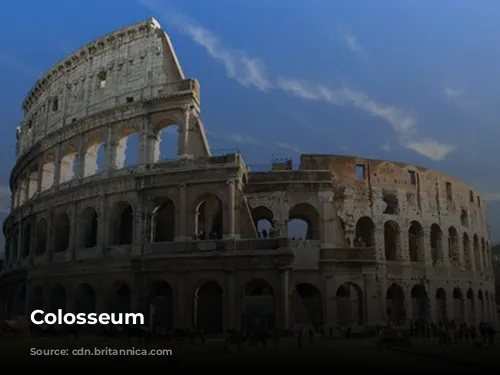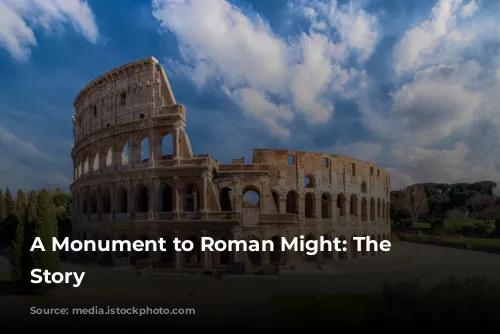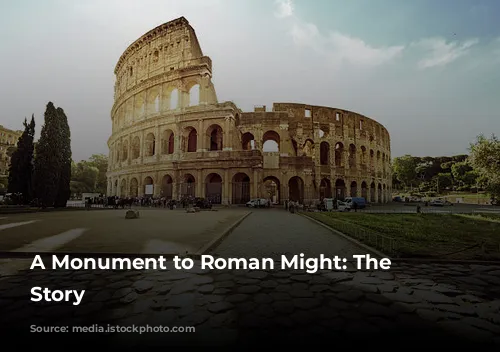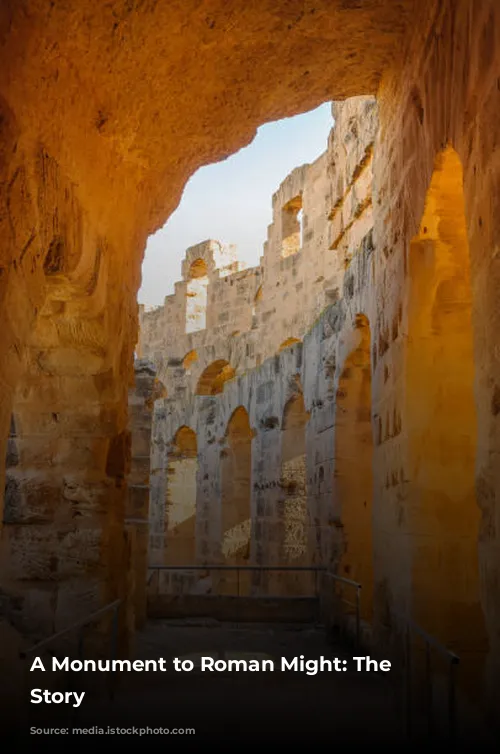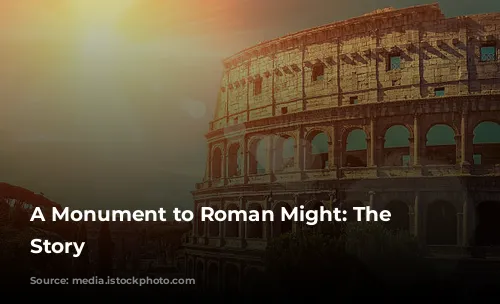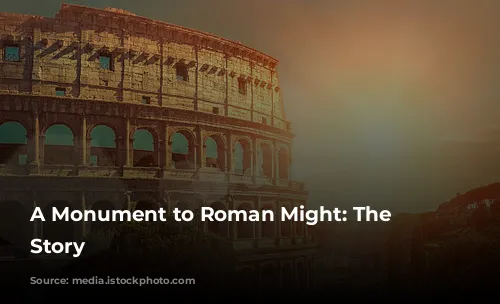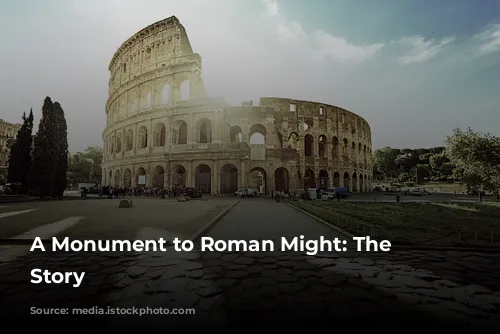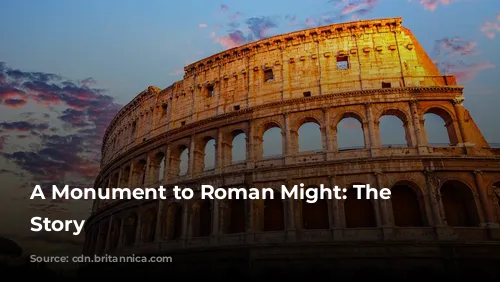The Colosseum, standing tall in the heart of Rome, is a timeless symbol of ancient Roman power. More than just an architectural marvel, it is a testament to the ingenuity and skill of the Roman engineers who designed and built it. Today, the Colosseum is a major draw for tourists, generating substantial revenue for the Italian government. In 2018, the Colosseum, along with the Roman Forum and Palatine Hill, attracted a staggering number of visitors, generating over $63.3 million (€53.8 million) in revenue, making it the most lucrative tourist attraction in all of Italy.
From Glory to Neglect: The Colosseum’s Tumultuous History
The Colosseum’s journey has been one of both grandeur and decay. Following the decline of the Western Roman Empire, this majestic structure fell into disrepair. During the 12th century, powerful Roman families like the Frangipane and Annibaldi transformed the arena into their fortress. The Colosseum’s fate took another drastic turn in the late 15th century when Pope Alexander VI allowed its use as a quarry, further eroding its once-imposing presence. For over a thousand years, the Colosseum languished in neglect, a shadow of its former glory. Thankfully, in the 1990s, state-funded restoration efforts began, breathing life back into this iconic structure.
A Legacy of Entertainment: The Colosseum’s Purpose and Construction
The Colosseum was built by Emperor Vespasian, a pivotal figure in the Roman Empire’s history. Its construction was a deliberate act, designed to rejuvenate Rome after the turbulent year known as the “Year of the Four Emperors” in 69 CE. Like other amphitheatres of the time, Vespasian envisioned the Colosseum as a hub of entertainment, a stage for gladiatorial combat, animal hunts, and even thrilling mock naval battles.
Construction of this monumental structure began between 70 and 72 CE under Emperor Vespasian. The Colosseum was completed and dedicated in 80 CE by Titus, Vespasian’s son and successor. Emperor Domitian, Titus’s brother, added the fourth story in 82 CE, further enhancing the Colosseum’s grandeur. It’s worth noting that the Colosseum was financed with the spoils of war – the wealth acquired by Titus during his conquest of Jerusalem in 70 CE. This grim detail underscores the Colosseum’s connection to the brutal realities of the Roman Empire, highlighting the use of enslaved Jewish laborers from Judea in its construction.
A Colossal Structure: The Colosseum’s Design and Features
The Colosseum, also known as the Flavian Amphitheatre, is an impressive elliptical structure, constructed using stone, concrete, and tuff. Its four stories reach a towering height, standing at a magnificent 620 by 513 feet (189 by 156 meters). With a capacity of 50,000 spectators, the Colosseum provided ample space for the Romans to witness the thrilling spectacles it hosted.
The Colosseum’s construction was a marvel of engineering. It was purposefully built on the site of Nero’s Golden House, a lavish palace complex. Nero’s artificial lake, a symbol of his extravagance, was drained to make way for the Colosseum, a deliberate act with symbolic weight. Vespasian, whose origins were far more humble than Nero’s, chose to replace the tyrannical emperor’s private pleasure with a public amphitheater. This symbolic gesture highlighted the shift in power and the Roman people’s desire for entertainment.
Engineering Triumph: The Colosseum’s Construction and Features
Unlike many amphitheatres, which were integrated into the surrounding hillsides for support, the Colosseum is a freestanding structure, showcasing Roman engineering brilliance. Its robust design incorporated a complex system of barrel and groin vaults, contributing to its impressive structural integrity.
The Colosseum’s exterior displays a beautiful architectural progression, showcasing three tiers of arcades adorned with engaged columns in the Doric, Ionic, and Corinthian orders. This distinctive design became a cornerstone of Renaissance architecture, known as the “assemblage of orders.” The Colosseum’s materials, too, reflect its grandeur: travertine for its primary structure and facade, volcanic tufa for the secondary walls, and concrete for the inner bowl and arcade vaults.
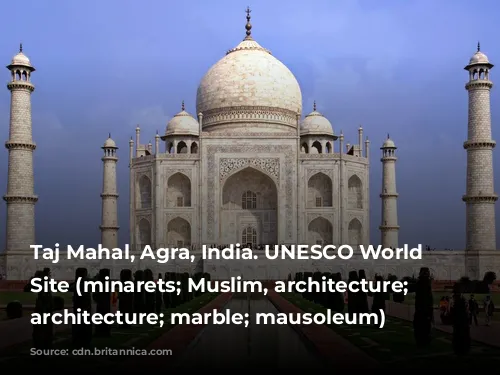
A Stage for Spectacle: The Colosseum’s Entertainment
The Colosseum’s impressive seating capacity – a remarkable 50,000 spectators – allowed the Romans to enjoy the spectacular events that unfolded within its walls. The Colosseum’s design was carefully considered to shield spectators from the sun, incorporating a massive retractable awning, known as a velarium. Supporting masts extended from corbels built into the top story, requiring hundreds of Roman sailors to manipulate the rigging that extended and retracted the awning.
The Colosseum was a stage for intense gladiatorial combat, exciting contests between men and animals, and even grand mock naval engagements. These events, a testament to the Romans’ fascination with spectacle and violence, captivated the Roman populace. However, there is no definitive proof that the Colosseum witnessed the martyrdom of early Christians, despite popular belief.

From Glory to Restoration: The Colosseum’s Legacy
Throughout medieval times, the Colosseum underwent several transformations. It served as a church and later as a fortress, occupied by powerful Roman families. The Colosseum suffered significant damage from lightning, earthquakes, vandalism, and pollution, losing its marble seats and decorative materials to the ravages of time. For over a thousand years, it was treated as little more than a quarry, a cruel fate for such a magnificent structure.
The Colosseum’s preservation began in earnest in the 19th century with notable efforts spearheaded by Pope Pius VIII. The 1990s saw the launch of a significant restoration project, breathing new life into this iconic monument. The Colosseum continues to attract millions of visitors annually, becoming a must-see destination for tourists visiting Rome. Regular exhibitions focusing on the culture of ancient Rome further enhance the Colosseum’s appeal, enriching the visitor experience.
The Colosseum stands today as a powerful testament to the grandeur and resilience of ancient Rome. It offers a glimpse into the past, inviting us to marvel at the skill and ingenuity of the Roman builders. The Colosseum’s story is a reminder that even the most enduring structures are vulnerable to the passage of time, and it emphasizes the importance of preserving our historical heritage for future generations.
